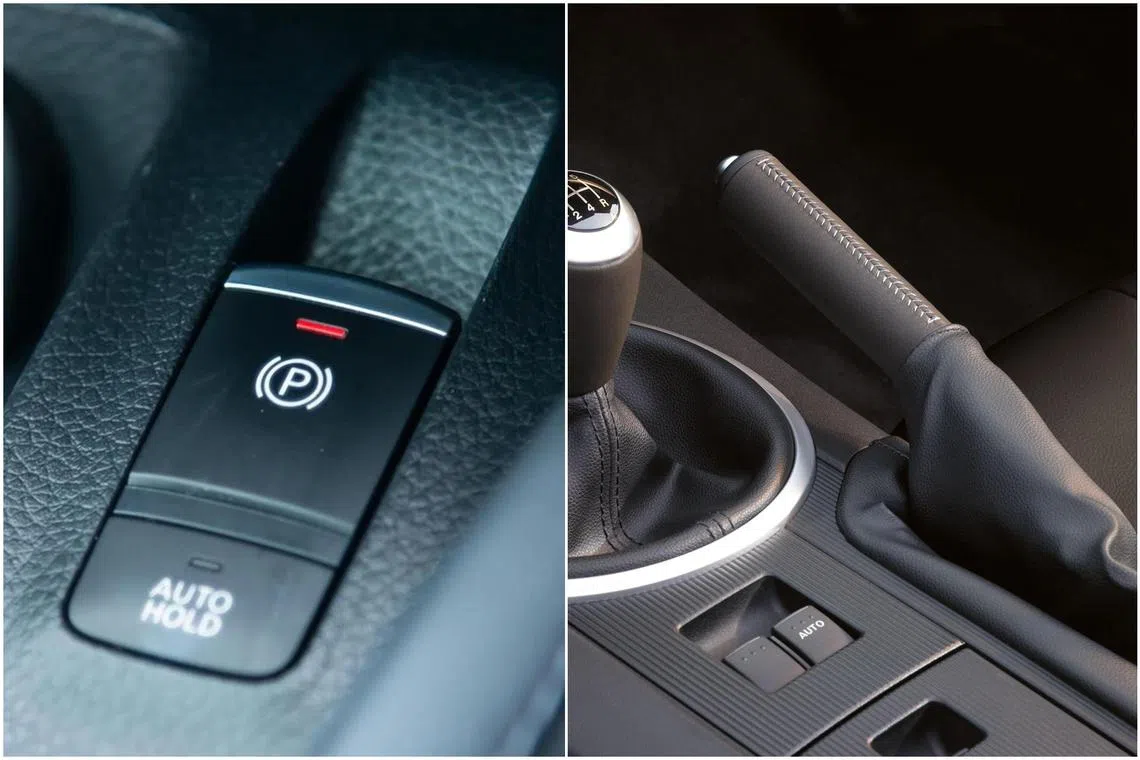Torque Shop: How to use the electronic handbrake
Sign up now: Get ST's newsletters delivered to your inbox

Instead of a handbrake lever (right), most cars now have an electric switch.
PHOTOS: CARGURUS, MAZDA
Follow topic:
Cars used to have that lever known as the handbrake. These days, it has been replaced by an electric switch. How does this work and can I use it in an emergency?
As a regulated industry requirement, automotive manufacturers were obligated to fit a handbrake in every car in the past. It harnessed muscle power to mechanically actuate the brakes on at least one pair of wheels, usually the rear, through a system of steel-wire rope cables and linkage rods.
The handbrake was lockable and served to ensure the vehicle was stationary, even on slopes. It functions primarily as a parking brake, but can be used in an emergency, such as when the foot brake fails.
Rally and stunt drivers also use the handbrake lever to induce oversteer when negotiating hairpin bends or to spin the car around while in motion.
Currently, the majority of cars incorporate a switch instead of a lever or pedal. Known as the electromechanical parking brake (EPB), it takes over the full function of locking one pair of wheels and must not be mistaken as duplicating the P-position transmission lock.
When the switch is flicked, an electric drive mechanically actuates the brakes, be it shoes on a drum brake system or the pads on disc brakes. In both arrangements, the EPB shares the friction braking elements (shoes or pads) with the primary hydraulic system.
On some cars, a separate, dedicated calliper and pad assembly is mounted on the hubs of the rear wheels to perform the EPB functions.
Whenever the driver flicks the switch once, the locking function will be activated, but only at speeds below 3kmh. Above this speed, EPB can be applied in an emergency by flicking and holding the switch.
In such an event, the car’s stability control system will immediately intervene. By using its full network of dynamic sensors, it can even apply the front brakes selectively, if necessary, to maintain stability. This means that rally-style handbrake flicks or spins will not be possible with EPB.

